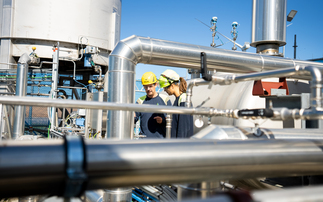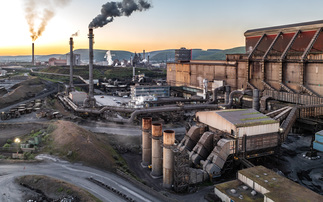Sebastien Soleille, head of energy transition at BNP Paribas, explains how a raft of different financial measures and are helping to rapidly build out clean energy worldwide
Meeting the Paris agreement target of keeping global warming to well below 2C above pre-industrial levels requires a seismic shift towards a low carbon economy. Clean and affordable energy - the target set out in SDG7 - is a core lever in the energy transition and the stars are aligning for renewable energy to go mainstream, reaching 28 per cent of the electricity production in the UK in 2018, whereas it was only 10 per cent in 2012.
The first development to sky rocket this sector is the cost of renewable energy and batteries, which is falling at one of the fastest rates on record. Lithium-ion batteries and offshore wind, two technologies that were immature and expensive only a few years ago, are now at the centre of the low carbon energy transition. They have seen spectacular gains in cost-competiveness in the last year, with the cost of batteries plummeting by 35 per cent in one year, while offshore wind costs have dropped by 24 per cent. Solar PV module prices, meanwhile, decreased in Europe by 83 per cent between the end of Q1 2010 to the end of Q1 2017, and this is being driven by tremendous technological progresses and growing economies of scale.
Technology is an enabler to scale up clean and affordable energy, and it can have a positive impact on other SDGs too. Take for example BNP Paribas' collaboration with US Fintech Mosaic. MOSAIC is a California-based fintech providing US homeowners financing solutions to help them install solar panels and improve their houses. This software gives access to local installers and proposes an online credit application. The company has already funded more than $1bn of solar panels in 37 states in the US. Improving the ease and affordability of renewable energy encourages sustainable economic growth, whilst also supporting reduced inequalities by giving people access to clean and affordable energy.
Alongside financing, policy has been a vital driver in supporting the transition to a low carbon economy, with wind and solar leading the charge in terms of the upscale of capacity installations from progressive policy. According to data from the International Renewable Energy Agency (IRENA), there has been over 1000 per cent increase in solar panel installations globally from 2010-2018. Regulation in China and India has been supportive too, and in 2018 China was the largest contributor to renewable energy growth. In India the federal and state governments offer certain subsidies schemes for household rooftop Solar PV installations, and the state hopes to utilise the power of the sun to fuel the clean growth story, in addition to reducing reliance on coal. This should have positive implications for other climate issues such as air pollution, which in turns supports the targets for good health and wellbeing in SDG3.
The final new lever that helps facilitate the energy transition in the financing space is the rise of renewable power purchase agreements (PPAs), which are long term contracts under which a company commits to buy the electricity produced by the other party at a fixed price. PPAs are booming for renewable energy and are replacing government support, following the trend of the USA, which has seen a 60 per cent increase in volumes over the last year. Until now, they have been widely used by tech companies who want to be able to source green electricity to power their datacentres. Recently the European Federation of Energy Traders (EFET), an association of wholesale electricity and gas traders and financial organisations, also published the first cross-country standard Corporate Power Purchase Agreement (CPPA) for renewables in Europe. It aims to bring down transaction costs and smooth the PPA negotiation process. EFET states that the CPPA has already "been supported by a number of lenders, confirming the bankability" of that agreement and is a positive step in accelerating the energy transition through collaborative frameworks.
These developments signal that we are moving fast towards a low carbon economy, but to continue and grow momentum further to address climate change we must continue to use finance as a lever which supports the energy transition. This includes positively utilising our own balance sheet, and at the end of 2018, BNP Paribas had exceeded its renewable energy target for 2020 and financed €15.4bn of renewable energy. Similarly, policies matter, and in early 2019 BNP Paribas Asset Management announced an enhanced coal-exclusion policy, aimed at tackling climate change by divesting from the largest source of carbon emissions. Banks should also support clients looking to finance and invest in the green economy, and sustainable finance can be a core lever in this through green bonds, sustainability-linked loans with environmental KPIs, and, finally, sustainable supply chain financing. Through such innovations finance can support the achievement of SDG7 and really put renewable energy centre stage.
Sebastien Soleille is head of energy transition at BNP Paribas








